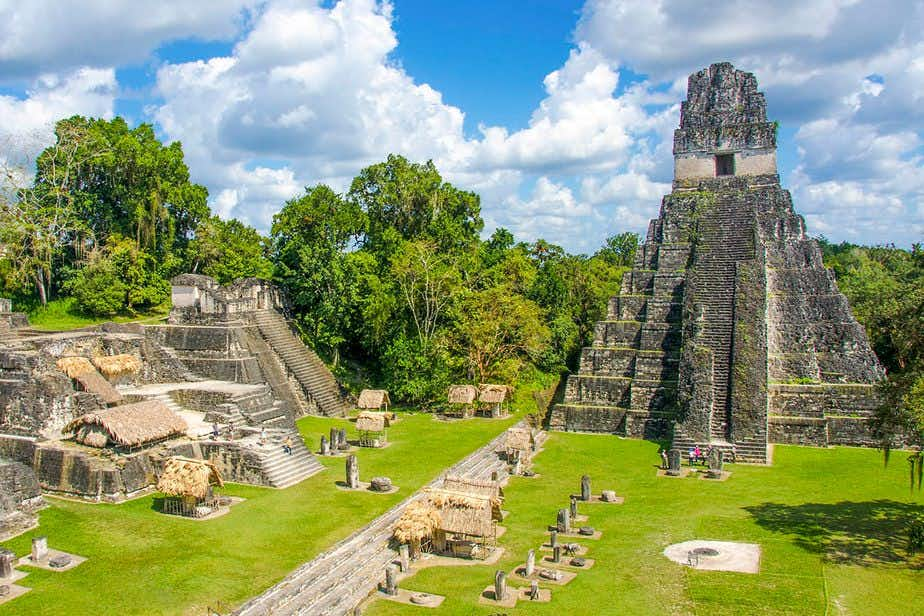Login
No account yet?
Create Account
Tikal
One of the largest and most beautiful Maya cities, surrounded by jungle
1 travellers have this on their Bucket List
0 been here
Tikal in Guatemala was one of the largest cities of the Maya. Perhaps the greatest of all. Even today, various temples tower high above the dense jungle of Petèn.
In the middle of the jungle of Petèn two temples of the ancient Maya city of Tikal rise out of the tree tops. You can climb some of the temples to enjoy the view.
Highlights of Tikal
For centuries, the city was purely mythical. Nobody was certain that it really existed, until Guatemalan explorers discovered the ruins in 1848. The first physical proof came when at the end of that century the adventurers Alfred Maudsley and Theobert Maler took photos of the site. They saw the ruins, completely overgrown, slowly disappearing among the jungle. This duo studied numerous ruins in Central America.
History of Tikal
The city was made up out temples, courts, palaces and residences. But the temples are the drawcards, which are remarkably high for a Maya city. Temple IV is almost 70 metres high, and it’s believed the temples were this high so they would tower over the rain forest. During the peak of the Maya civilisation the city grew thanks to its prosperty.
The size of the city became clearer when it was mapped for the first time in the 20th century. It wasn’t an easy job, and more than 3.000 monuments have been unearthed. It took until the 1970s before the entire city was uncovered. It became clear that the many pyramid-shaped temples came from an important ancient civilisation.
More questions arose: What was the role of this city? What was its relationship to other Maya cities? When was it founded? A lot of answers to these questions were found on carved stelae, or stone pillars, that were discovered in several of the buildings. Archaeologists found dozens of them, full of information.
Scientists have deciphered the carved hieroglyphic language they found, and learned about the rulers of the city, as well as important events that took place here. One of the stelae they found, also known as the 29th stela, is the oldest of all the Maya stelae. It dates back to 292 AC, known as the start of the Classic Period, or the start of the peak of Maya civilisation.
The famous statues of the Maya
Research shows that the Mayas would make a stela for their ruler approximately once every twenty years. They had interesting names, some of which translate to ‘Great Jaguar Paw’ and ‘Stormy Sky’. The carved stelae also show how they conquered other groups of people and created alliances.
Tikal is strategically located at a crossroads, and water was always nearby thanks to storage tanks in which they collected rain water. The pyramids were funerary monuments. Scientists have discovered tombs with jewels made out of jade, death masks and decorated earthenware. Some of the buildings were temples, and most of the buildings date back to the 5th to the 9th century.
Why did Tikal end?
Scientists have pondered what brought Tikal’s downfall. And in 2002, stelae were uncovered in Dos Pilas in Guatemala that told the story of Tikal. For a long time it was believed that the Maya city of Calakmul in Mexico was a strong ally of Tikal. But it turns out it was also their biggest enemy. Their first great battle was in 711 AC, and Tikal won, leading to prosperity and growth, and around 200.000 people lived in there.
But the ongoing power struggle continued and brought down this great city, though it’s still not exactly clear why. The last stela shows the year 869, and then the dates stop. However… scientists have only studied about 15 percent of the city so far, so who knowns what they may still discover. And yet, it’s the largest archaeological site of Central America…
You can visit nearly all the temples in Tikal, and most buildings have been cleared of vegetation. But some are slowly being overtaken by nature. That’s part of the charm of Tikal. A part of its rich history can be seen, though not all of it. Simply because we still have not yet discovered all there is to learn about Maya culture.
Best time for Tikal
The most pleasant weather is between December and February, the mornings and nights are nice and cool. It’s driest in March and April, and the wet season is between May and October, but sometimes it lasts until late November. Most tourists visit between Christmas and Easter, but it can still get busy in July and August.
Visiting Tikal
t can get very busy at Tikal. Especially after 10am when the tourist buses arrive, so get there early and visit the more remote parts around noon when it’s busiest.
Be aware
Tikal can get very busy with tourists. Especially after ten o'clock when the big tourist buses arrive. So be there early and make sure you are on the remote parts around noon.
1 travellers have this on their Bucket List
0 been here


